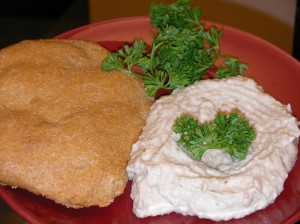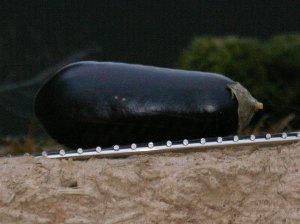
Falafel fixins
The Yia Yia inside of me is frequently worried about the many, many single Orthodox people I know. These are young, pious people who are real catches. Nay, even, great catches. If only they could meet each other, fall in love, and, as the wedding blessing says, have “a peaceful life, length of days, chastity, mutual love in the bond of peace, long‑lived offspring, gratitude from their children, and, a crown of glory that does not fade away.”
If you are an Orthodox Christian of either sex looking for a spouse, then you need this recipe. Falafel goes straight to the heart- in a good way. Look, I am not much of a wife but I can make falafel and so I am still married. If it has done this for me, imagine what it can do for you.
Falafel is perhaps the most delicious fasting food out there. If, like Daniel, you “eat no pleasant food” during the fast then you better skip this post. For everyone else a falafel recipe.
Some important information on making falafel:
- You need either a food processor or a mortar and pestle. The chickpeas need to be roughly ground. I don’t think the same can be accomplished with a blender.
- Do not use canned or cooked chick peas to make your falafel. Two terrible things will happen if you do.
- The temperature of the oil is crucial. Use a candy/fry thermometer and keep it in the oil. Don’t start frying until it reaches the correct temperature and do not start the next batch until the oil returns to temperature.
One possibility is that your falafel will fall apart after a few minutes in the oil.
The second possibility, if your falafel do hold together, they will absorb too much oil and be soft and smooshy. They will still taste good but lack the better quality of falafel, and that is crunchiness.

Falafel mix from canned peas, too soft, too wet, no good.
- You can roll falafel into a ball or patty by hand. You can also use scoop up a tablespoon of falafel mixture with a tablespoon and use another tablespoon to press the mix into a patty shape. For a good visual on shaping check out DedeMed. (about 7:45 minutes in)
- Make sure your oil is hot enough. You can measure with a candy thermometer or wait for your olive oil to reach its smoke point (375 degrees) and then turn it down. I recommend a thermometer if you are a distracted cook. I really don’t want you to burn your house down making falafel.
- If you don’t want to use oil you can broil the falafel. You will need to be creative to keep them from sticking to the pan.
Finally, chick peas and sesame are complementary proteins. So, to obtain the most nutrition from this dish I recommend serving your falafel with tahini sauce, or on a pita with hummus(if made with tahini) and other fixings for a delicious falafel sandwich. I would love to hear your success stories or answer any questions you have. Please, don’t be discouraged if your first batch isn’t perfect. Falafel is an art and requires practice and finesse. Practice never tasted this good.
Falafel
1 cup dried chickpeas/garbanzo beans (do not substitute canned)
1/2 large onion, roughly chopped (about 1 cup)
2 Tbsp finely chopped parsley (optional but recommended)
2 Tbsp finely chopped cilantro (optional but recommended)
1 tsp salt
4 cloves of garlic
1 tsp cumin
1 tsp baking powder
4-6 Tbsp flour
Olive of vegetable oil for frying
Step 1. Lord, bless my work.
Step 2. Put the chickpeas in a bowl and add enough cold water to cover them by two inches. Soak overnight, then drain.
Step 3. Place the drained, uncooked chickpeas and the onions in the bowl of the food processor with steel chopping blade. Add parsley, cilantro, salt, hot pepper, garlic, and cumin. Process until roughly chopped and blended but not pureed. See picture

Chopped just right
Step 4. Sprinkle in the baking powder and 4 tablespoons floor, pulse or stir until blended. Ideally the dough will form a ball and stick together without sticking to your hands much. Refrigerate for several hours to blend flavors and make rolling easier. You can skip the refrigeration but I think the rest really strengthens the flavors.
Step 5. Using your hands or two spoons shake the mixture into balls or patties, about the size of a walnut.
Step 6. Heat oil to 375 degrees in a deep pot or wok. Fry one ball to test. The falafel should immediately sizzle and start to turn brown. Fry as many as will fit at once in your pot, turning after about 3 minutes to brown the other side. This is the only cooking the beans get so make sure you cook em good. You want your falafel brown on the outside and crispy. The inside should be cooked but not mushy. Think about a hushpuppie but not so cakey.
Drain on paper towels. Eat!
Tahini Dipping Sauce
3/4 c tahini
1/2 tsp minced garlic
3/4 tsp salt
1/3 c lemon juice
1/2 to 2/3 c water
Step 1. Lord, bless my work.
Step 2. Mix tahini, garlic, salt, and lemon juice to form a smooth, thick paste. Beat in water until the sauce is the consistency of heavy cream.
Read Full Post »













